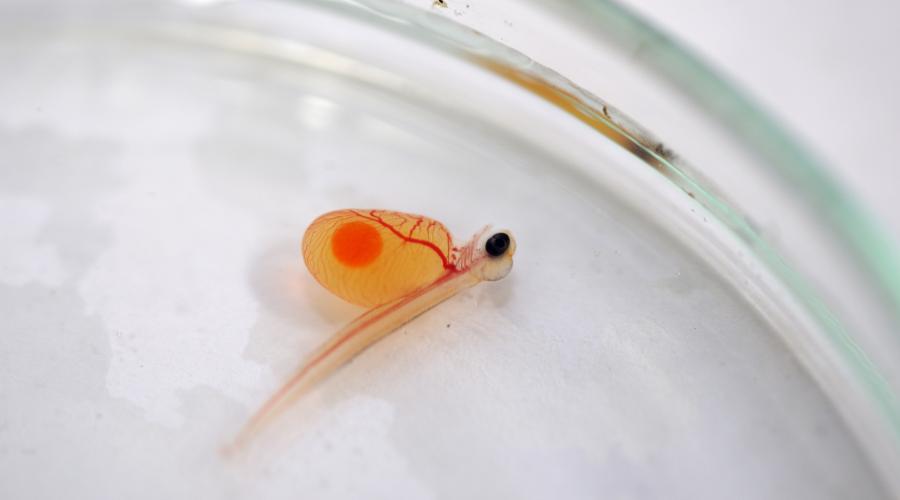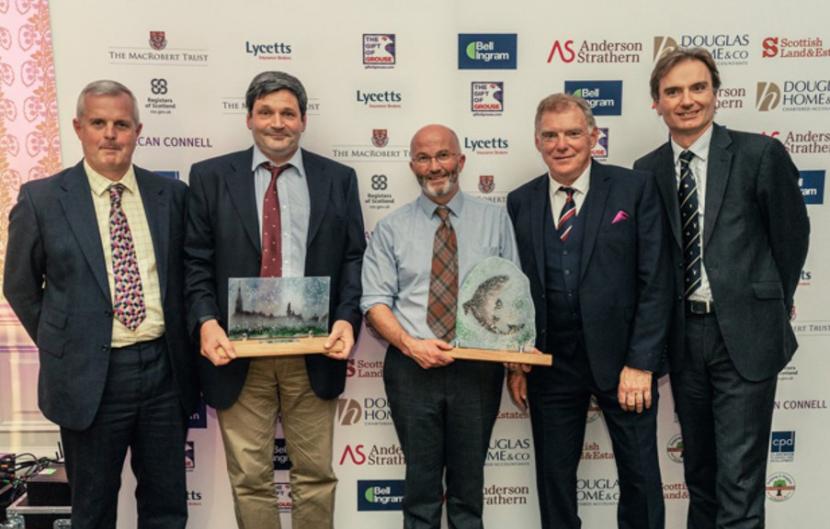
Peatland ACTION case study: What’s the connection between peat and fish?

What's the connection between peat and fish? The answer is not about smoking the fish over a peat fire! Peatland Action project officer Rachel Coyle from the Tweed Forum can answer this question.
I’ve been involved in an interesting project at Dryhope Farm on the Philiphaugh Estate in the Scottish Borders which links upland peatland restoration with the salmon fishing on the River Tweed….from catchment to catching fish!
What was the issue?
The blanket bog at Dryhope retains, releases and filters the water that flows down the Kirkstead burn into St Mary’s Loch and from there into the Yarrow Water – a tributary of the Tweed. Visiting the site I could see that damaged, bare peat (a result of historic sheep management on the bog) and drainage channels were reducing the capacity of the peatland to stay wet and regulate the water flow. Restoring the ‘sponge’ effect in the top of the catchment can help to reduce flash flooding events in the lower catchment which (particularly in the winter months) can mobilise gravels to such an extent that fish ova are swept away and become unviable. In addition, increasing the water storage capacity of the uplands will reduce incidents of rivers drying up during periods of drought, increasing resilience of fish populations.

Which shows an extensive area of peat ‘hags’ undercut and eroding peat banks.
©Tweed Forum/Peatland ACTION.
Philiphaugh Estate recognised the need for restoration of the site at Dryhope, to bring about wider benefits within the Tweed catchment .The Kirkstead burn is one of many vital spawning burns for trout and salmon in the upper Tweed (and in particular the rare spring salmon component). As Salmon fishing contributes £24m per year to the local economy and supports over 500 jobs, keeping the river and its tributaries in a healthy condition is important to businesses and the local community.

What was done to remedy / restore the peat?
Peatland Action and Forest Carbon supported the ‘reprofiling’ of these areas of bare peat (known as hags) and SRDP funding allowed for the blocking of a network of drainage ditches.
Benefits of restoration at this site?
It’s remarkable to see the difference. This work at Dryhope will not only improve water flow regulation in the Tweed Catchment but will also increase carbon storage (by ‘locking’ the carbon rich peatland soil under a layer of vegetation), improve water quality and create better habitats for upland wildlife, such as Black grouse and Hen harriers. This work builds on other complimentary habitat restoration work carried out at Dryhope over the last 20 years, including 70ha of native riparian tree planting, which will provide shade for upland streams, vital due to the threats brought by climate change.

I look forward to visiting the site again in the future to see how successful this restoration work has been.
Acknowledgements
Special thanks to: Sir Michael Strang Steel (Philiphaugh Estate), Glendinnings Ground Works Ltd (contractors), Derek Robeson – SRDP planning and application works (Tweed Forum), Forest Carbon – Carbon Finance, Alasdair McDonald & Hugh Chalmers - Project Planning and management (Tweed Forum)
Award winning project
Congratulations to Dryhope farm who entered, and won the prodigious Bell Ingram sponsored 'Enhancing our Environment' category award (in collaboration with Peatland ACTION and Tweed Forum) at the Scottish Land and Estates 'Helping It Happen' 2018 National Awards in Edinburgh.

For further information, or to get involved with PeatlandACTION
Peatland ACTION case studies: We demonstrate links between peat condition and: fisheries; grouse; carbon storage; wildlife; landscapes; human history; and so much more.
If you would like to contribute to the on-going work of Peatland ACTION please contact [email protected].
For further information: www.nature.scot/peatlandaction.





